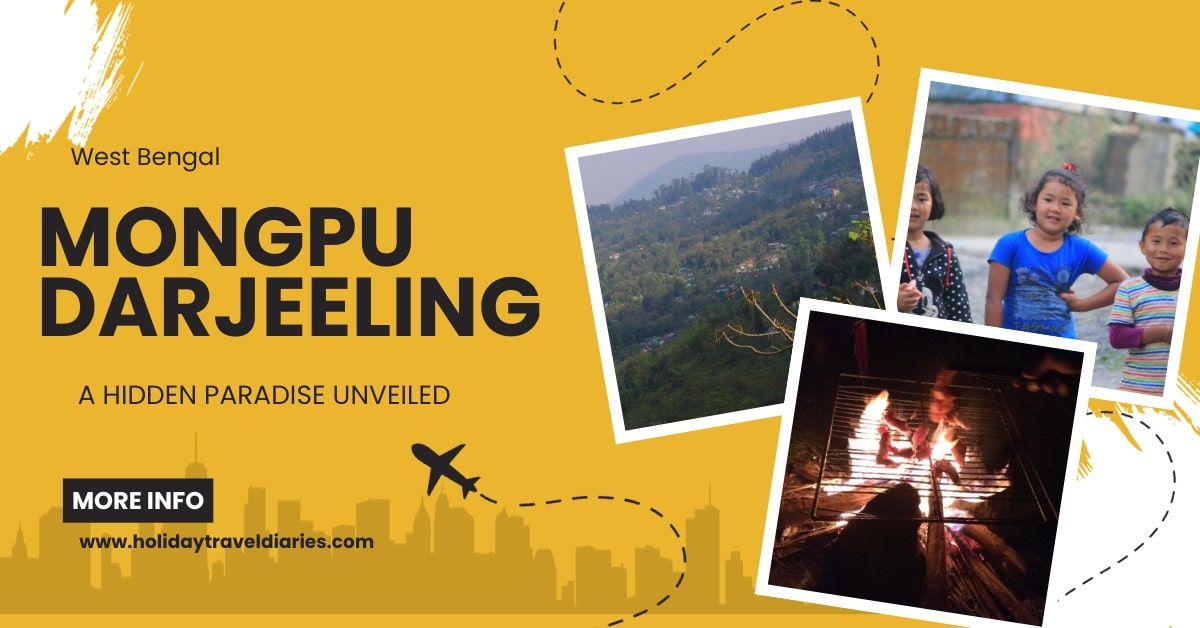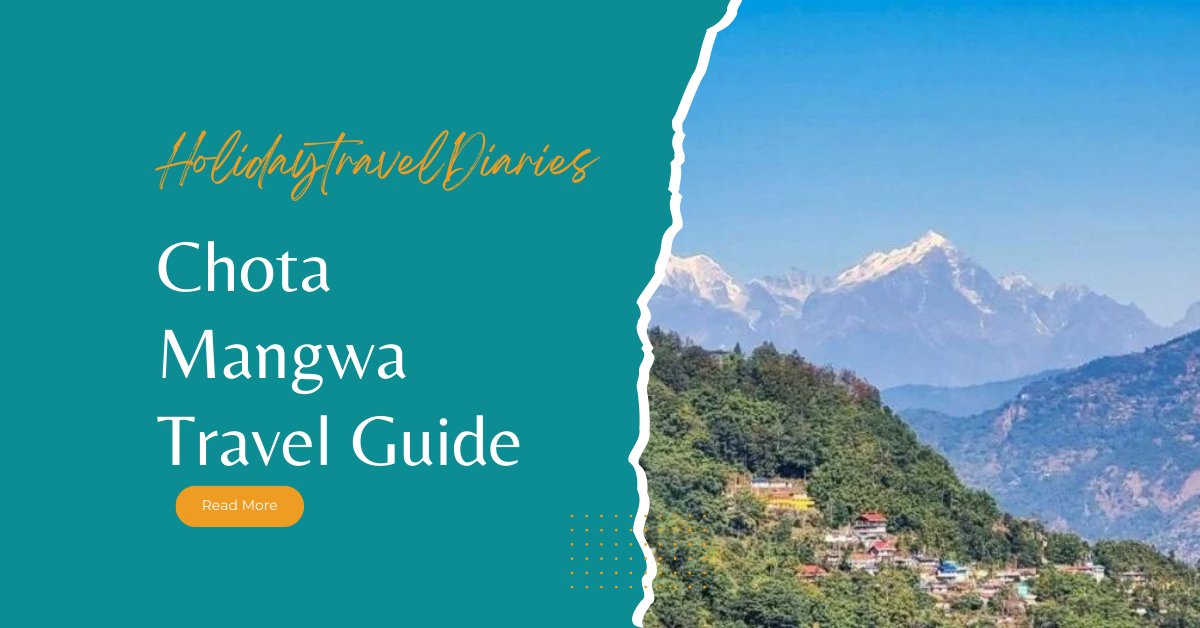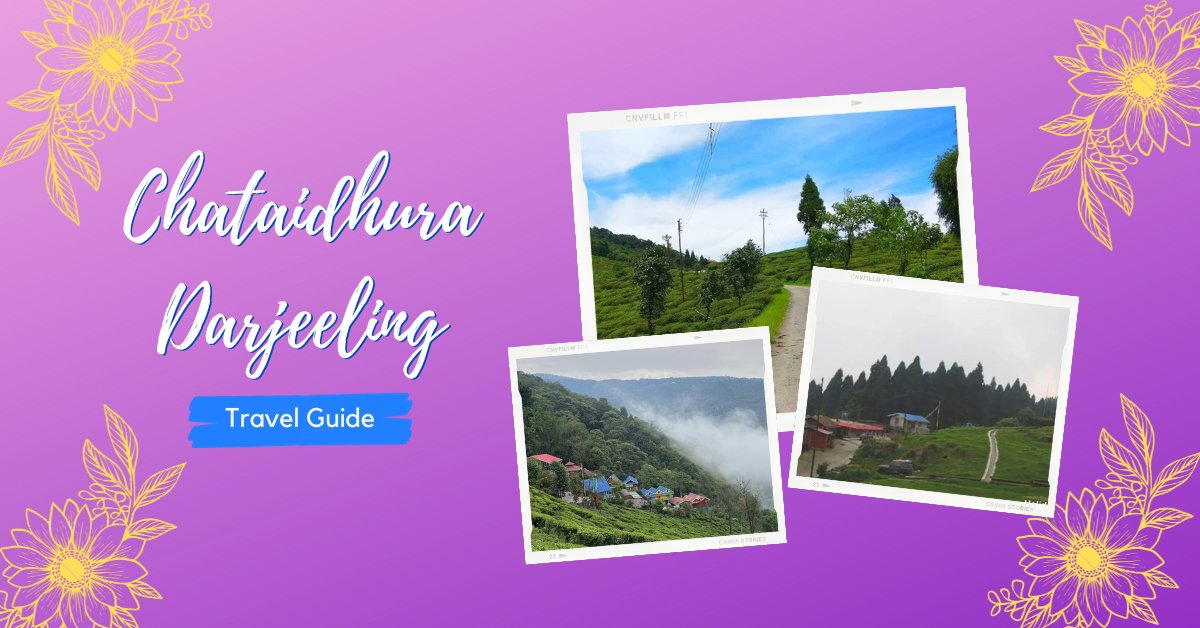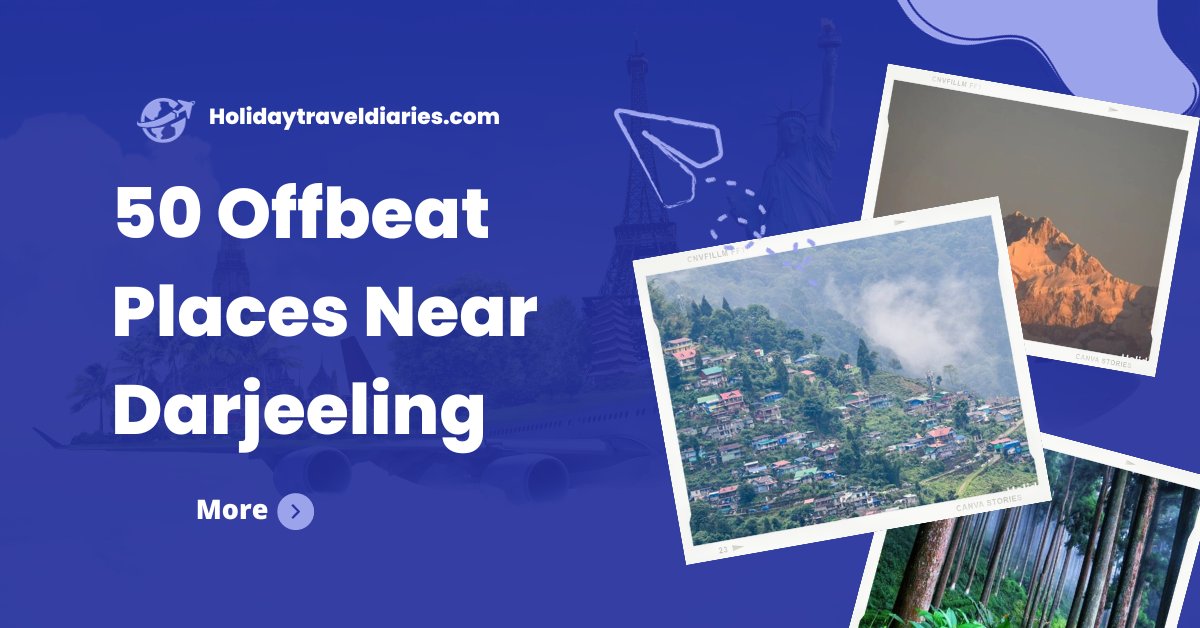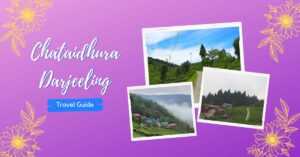Mongpu remains one of the region’s best-kept secrets, a haven for those seeking tranquility amid nature’s grandeur. This quaint hamlet, situated at an altitude of approximately 3,500 feet, invites travelers into a world where time seems to slow down, and every corner reveals a story.
As you traverse the winding roads leading to Mongpu, the air becomes crisper, infused with the fragrance of rhododendrons and pine. The journey itself is a prelude to the serenity that awaits, a visual symphony of terraced tea gardens, lush forests, and panoramic vistas of the Eastern Himalayas.
Mongpu is not just a destination; it’s a narrative etched in the pages of Darjeeling’s rich history. Once a favored retreat of Rabindranath Tagore, the Nobel laureate found inspiration in the undulating landscapes and poetic ambiance of this hidden paradise. Today, travelers have the opportunity to follow in his footsteps, exploring the quaint village, visiting the revered Tagore House, and immersing themselves in the cultural legacy that permeates every corner of Mongpu.

Join me on a virtual journey as we unravel the enchanting tales and explore the uncharted beauty of Mongpu Darjeeling—a destination that promises not just a getaway but a rendezvous with nature’s sublime poetry.
How to Reach Mongpu?
While its secluded charm is a draw, reaching Mongpu is an adventure in itself, with multiple transport options offering scenic routes and unparalleled experiences.
By Air: The nearest airport to Mongpu is Bagdogra Airport, approximately 76 kilometers away. A quick and convenient option, the journey from the airport to Mongpu can be covered by hiring a taxi or opting for shared cabs available at the airport.
By Road: For roadtrippers, the journey to Mongpu is a tapestry of winding roads and breathtaking landscapes. From Darjeeling, a picturesque drive of about 35 kilometers unfolds, offering glimpses of terraced tea gardens and mist-kissed mountains. Taxis and private cars are readily available in Darjeeling, ensuring a comfortable ride to Mongpu.
By Rail: New Jalpaiguri (NJP) is the nearest major railway station, situated approximately 52 kilometers from Mongpu. From NJP, taxis or pre-booked private cars can be hired for a scenic drive through the undulating terrain to reach the tranquil hamlet.
Shared Car Options: For budget-conscious travelers, shared car options are available, especially from Bagdogra Airport and NJP. Shared cabs provide a cost-effective and sociable means of reaching Mongpu, allowing you to share the journey with fellow explorers while relishing the panoramic views.
Navigating the routes to Mongpu Darjeeling is not just a means to an end; it’s an integral part of the journey, offering glimpses of the region’s diverse landscapes and cultural mosaic. Whether you choose the skies, the roads, or the rails, each mode of transport presents its own set of adventures, arriving at Mongpu a crescendo in your exploration of the mesmerizing Darjeeling district.
What to see In And Around Mongpu?
In the center of the Darjeeling district, Mongpu is a hidden gem that is a symphony of natural beauty and cultural richness just waiting to be discovered. Here is a carefully chosen list of places to see that perfectly capture the essence of Mongpu’s attraction as you meander through this tranquil hamlet:
- Cinchona Factory: The journey into Mongpu begins with a visit to the Cinchona Factory, a historic establishment that played a pivotal role in cultivating quinine-rich Cinchona plants. This is where the Government Cinchona factory was founded in 1864. This is still in operation. The factory, surrounded by lush greenery, offers insights into the region’s medicinal history and the cultivation of these valuable plants.
- Rabindra Bhavan: Immerse yourself in the literary legacy of Rabindranath Tagore at Rabindra Bhavan, the poet’s retreat during his visits to Mongpu. The tranquil ambiance of this residence, nestled amidst picturesque landscapes, serves as a living testament to Tagore’s inspiration drawn from the natural beauty of Mongpu.
- Munpoo Bazar: For a taste of local life and culture, explore Munpoo Bazar. This bustling market is a melting pot of colors and flavors, where you can interact with locals, shop for traditional handicrafts, and savor local delicacies.
- Monastery: Mongpu is adorned with a serene monastery that exudes spiritual tranquility. The monastery, adorned with vibrant prayer flags, offers a peaceful retreat for those seeking moments of introspection and quiet contemplation.
- Mungpoo Viewpoint: Ascend to the Mungpoo Viewpoint, and be prepared to be mesmerized by panoramic vistas of the surrounding hills and tea gardens. The viewpoint provides a breathtaking vantage point, allowing you to witness the beauty of Mongpu unfold beneath you.
- Orchid Center: Nature enthusiasts will find solace in the Orchid Center, a haven for orchid lovers. Mongpu’s Orchid Center showcases a diverse collection of orchid species indigenous to the region, creating a vibrant tapestry of colors and shapes.
- Kalijhora Waterfall: Embark on a short trek to the Kalijhora Waterfall, where the gushing waters create a picturesque cascade amidst the verdant surroundings. The journey to the waterfall is as enchanting as the destination itself, with nature revealing its wonders at every step.

Mongpu, with its kaleidoscope of attractions, transcends the ordinary, offering a retreat that combines natural serenity with cultural allure.
Where to Stay in Mongpu?
There are no resorts or hotels in the village. Since it’s a remote hamlet, there aren’t many options for lodging. Still, visitors have the option of staying in locally owned homestays. Here, visitors will only find the most basic amenities.
Best Time To Visit Mongpu
Here’s a concise guide in point format to help you choose the best time to explore Mongpu:
Spring (March to May):
Experience Mongpu in full bloom, with rhododendrons and orchids adorning the landscapes. The weather is pleasant, making it an ideal time for nature walks and outdoor exploration.
Summer (June to August):
While summers bring warmth, Mongpu’s higher altitude ensures cooler temperatures. It’s a great time to witness lush greenery, with occasional showers adding to the scenic charm.
Autumn (September to November):
Enjoy clear skies and crisp weather during autumn. The post-monsoon period enhances visibility, offering panoramic views of the surrounding hills and tea gardens.
Winter (December to February):
Embrace the chilly embrace of winter in Mongpu. Though temperatures drop, the misty landscapes and the occasional dusting of snow create a magical ambiance.
Select the season that aligns with your preferences, whether it’s the vibrant colors of spring or the serene charm of winter. Mongpu, with its diverse landscapes, promises a unique experience year-round.
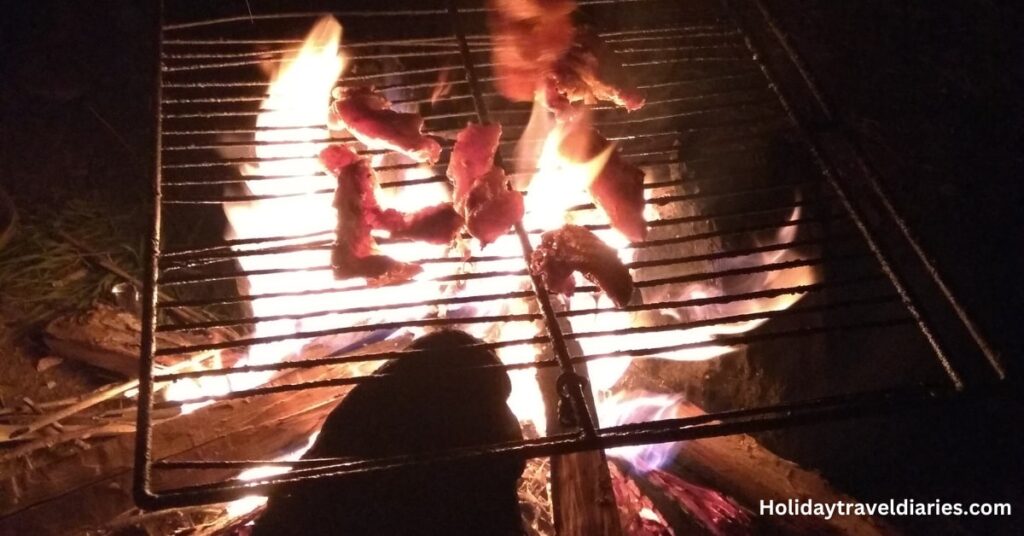
Things to Carry While Travelling To Mongpu
- A travel bag.
- A torch.
- A slipper.
- Travel shoes
- Plastic for keeping wet things.
- Dry food as needed
- Soap paper
- Clothes according to the weather.
- Necessary Medicines.
- Camera For Taking pictures of Breathtaking beauty.
Frequently Asked Questions About Mongpu
What is the best time to visit Mongpu Darjeeling?
The best time to visit Mongpu Darjeeling is during spring (March to May) and autumn (September to November) for pleasant weather and clear skies.
How can I reach Mongpu from Bagdogra Airport?
From Bagdogra Airport, you can hire a taxi or opt for shared cabs to reach Mongpu, which is approximately 58 kilometers away.
What are the must-visit attractions in Mongpu?
Explore the Cinchona Factory, Rabindra Bhavan, Munpoo Bazar, Monastery, Mungpoo Viewpoint, Orchid Center, and Kalijhora Waterfall in Mongpu.
Are there homestay options in Mongpu?
Yes, you can choose to stay at Rabindra Bhavan Homestay or explore other homestay options in Mongpu for an immersive experience.
What is the significance of the Cinchona Factory in Mongpu?
The Cinchona Factory played a crucial role in cultivating quinine-rich Cinchona plants, contributing to the region’s medicinal history.
Can I visit Mongpu during the monsoon season?
Yes, you can visit Mongpu during the monsoon (June to August), experiencing lush greenery, occasional showers, and a refreshing ambiance.
How far is Mongpu from Darjeeling, and how can I travel between the two?
Mongpu is approximately 30 kilometers from Darjeeling. You can hire taxis or private cars for a picturesque drive through the hills.
What is the history behind Rabindra Bhavan in Mongpu?
Rabindra Bhavan served as Rabindranath Tagore’s retreat during his visits to Mongpu, showcasing the poet’s inspiration drawn from the natural beauty of the region.
Are there camping options near Mongpu?
Yes, you can experience camping near Mongpu, particularly riverside camps, offering an adventurous stay amidst nature.
Final Words
From the historic Cinchona Factory to the poetic retreat of Rabindra Bhavan, every corner of Mongpu narrates a story of its own. The landscapes, adorned with orchids, rhododendrons, and tea gardens, create a canvas that changes hues with each passing season.
Whether you’re exploring the vibrant Munpoo Bazar, embracing the tranquility of the monastery, or witnessing the panoramic vistas from the Mungpoo Viewpoint, Mongpu beckons travelers to immerse themselves in its enchanting embrace.
This tour guide has unraveled the mysteries of Mongpu, guiding you through the best times to visit, the diverse attractions it houses, and the array of accommodation options available. Whether you choose a homestay, a riverside camp, or a comfortable lodge, Mongpu promises not just a destination but an experience that lingers in the heart.
As you plan your journey to Mongpu Darjeeling, let this guide be your compass, steering you toward the hidden treasures that make this destination truly special. May your exploration of Mongpu be filled with moments of awe, cultural discovery, and a deep connection with the beauty that defines this serene hamlet. Safe travels and may Mongpu weave its magic into your travel tales.
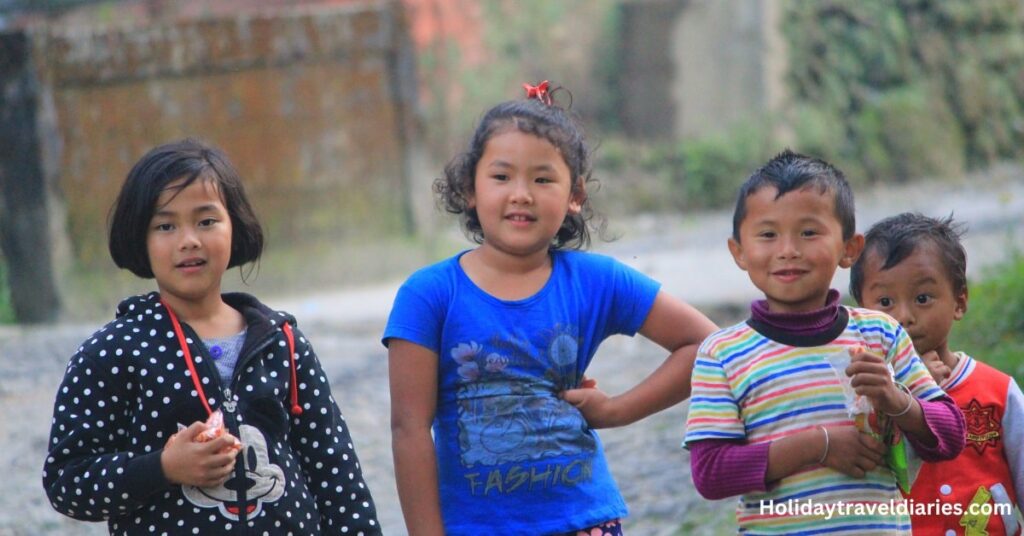
Leave No Trace: Respect the natural environment and follow the Leave No Trace principles. Dispose of waste responsibly, return any non-biodegradable items, and avoid littering. Respect the flora, fauna, and local communities by walking lightly and leaving little impact on the environment.
If you like this writing and information then bookmark this blog and if you want you can follow us on Facebook and Instagram. You can also keep the push notification of this website on so you will get notifications on mobile when new posts come.
If you have any comments on this article, please let me know. If you want, you can also send me any necessary message through this form. Stay well. Thanks so much for reading this post.
